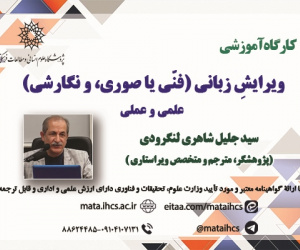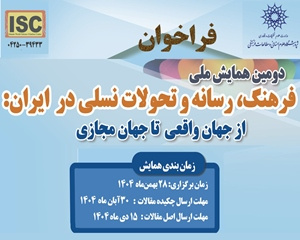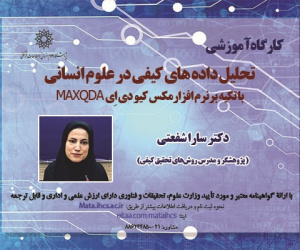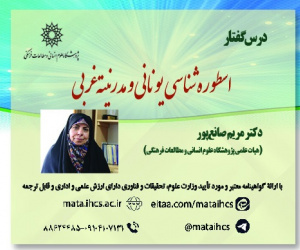تحلیل نگرش و انتظارت زنان گردشگر از فضاهای جذب گردشگری روستایی، مطالعه موردی: دهستان رودپی شرقی شهرستان ساری (مقاله علمی وزارت علوم)
درجه علمی: نشریه علمی (وزارت علوم)
آرشیو
چکیده
توجه به نگرش و انتظارات زنان گردشگر از فضاهای جذب گردشگر روستایی و رفع نیازهای اساسی آنان در ابعاد فردی، روانی، اجتماعی و زیستی به منزله یکی از عوامل کلیدی و اساسی در راستای تقویت روابط اجتماعی در فضا و زمان است که نقش بسیار مهمی در جذب و حضورشان در فضاهای گردشگری روستایی دارد هرچند در کشور ما توجه چندان به آن نشده است. این پژوهش باهدف شناسایی نگرش و انتظارات زنان گردشگر و ارزیابی آن در روستاهای دهستان رودپی شرقی در شهرستان ساری انجام شد. روش پژوهش توصیفی- تحلیلی مبتنی بر واکاوی ادبیات نظری به منظور شناسایی فضاهای جذب گردشگری روستایی است که در این خصوص 13 شاخص شناسایی شده است. سپس شاخص های مرتبط با هر متغیر تهیه و در قالب پرسشنامه تدوین شده است. پس از تعیین روایی محتوایی پرسشنامه توسط اساتید؛ نگرش و انتظارات زنان از فضاهای جذب گردشگر مورد ارزیابی و سنجش قرار گرفت. جامعه آماری این تحقیق 208 نمونه محاسبه و به صورت تصادفی بین زنان گردشگر توزیع و پخش شده است. نتایج به دست آمده از آزمون فریدمن نشان می دهد که متغیر محافظت با امتیاز 37/2 و آسایش با امتیاز 18/2 و لذت با امتیاز 45/1 بیشترین میانگین ها را به خود اختصاص دادند که نشان می دهد توجه به نیازهای زنان گردشگر در فضاهای عمومی خیلی مهم است. نتایج یافته های آزمون t تک نمونه ای نشان داد که سطح معناداری برای همه شاخص ها وجود دارد، به طوری که در شاخص های کیفی بصری با امتیاز 39/4 و شرایط نامساعد جوی با امتیاز 38/4 بیشترین میانگین ها را به خود اختصاص دادند.Analysis of women tourists' attitudes and expectations from rural tourism attraction spaces Case study: East Rudpi village of Sari city
Introduction Addressing basic human needs and responding to them is a strategy that is determined by the community itself and is created through cross-sectoral collaborations. These needs encompass different dimensions of individuals' individual, psychological, social and biological needs. Because of their basic function, villages provide for many of the individual and collective needs of the rural community, they are characterized by a dynamic and permanent change in social, economic, physical and spatial dimensions. Such activities require spaces that motivate and bring people together to achieve social solidarity through "face-to-face dialogue and relationships" (Roumiani et al., 2019: 136). Theoretical The importance of tourist attraction spaces in the world is not only due to recreational-economic values, but also due to its environmental importance, which tourists, including women, pay particular attention to (Hosseini et al., 2013: 52-53). Thus, in the academic field, the study of the status of women in tourism has recently received the attention of scholars; it has opened the ground for extensive research in the world. Following the importance of the above topic, the present study investigates the views of tourist women from tourism destination of Sharghi Rudpi Village of Sari County with the aim of considering their attitude in tourist attraction spaces. Tourists, including women, because tourist women, often referring to family-based or group-based tourism destinations, have relatively different views and beliefs about the factors that underlie development, have long welcomed this area. They have tourism. Research Methodology This study aimed to analyze women's attitudes and expectations about rural tourism attractions. The type of research is therefore applied and descriptive-analytical in nature and method. In conducting the research, firstly, information on the subject and area was collected from books, documents, journals, baseline maps, and statistics and then required data through field studies including observation, questionnaires, demographic characteristics and characteristics of women tourists. it placed. Therefore, in order to examine women's attitudes and expectations of Rural Tourism Attraction Areas from three criteria (pleasure, comfort and protection as described in Table (1)), design and compile a Likert spectrum questionnaire (very low1, 5 = very high) design and have been evaluated. To assess the validity of the questionnaire, the experts were first provided with validity, the validity of the research instrument was measured, and the final indices and items were extracted. The questionnaire developed at this stage was pre-tested in the study area. Descriptive (mean, standard deviation, variance) and inferential statistics (Friedman's sample t test) were used for data analysis. The peasants, who were considered for each period of 2018-2019, determined the statistical population of this study. So that the villagers mentioned the inflow rate of all the tourists, of which one third of the tourists were reserved for women. Therefore, the sample size was determined using Cochran formula with error of 0.07. The sample size of this method was calculated 195 questionnaires and in some villages was increased to 10 samples due to the small sample size, to determine a total of 208 questionnaires. Cronbach's alpha method in SPSS software was used to evaluate the validity (with access to various internal and external sources) and its reliability in compiling and compiling the questionnaire. The results are listed as 0.885 for attitude and expectation indexes, respectively. Conclusion In recent decades, the development of tourism activities in tourist attraction spaces - one of the important factors in the transformation of rural settlements - has attracted a great deal of attention, especially from women tourists. These activities have led to profound and fundamental changes in the provision of various socio-economic, cultural, environmental and physical dimensions in the areas of tourism attraction in rural areas. At the same time, focusing on the quality of tourism attractions and their livelihoods, the continuity of rural life and its dubious desire to attend and visit the attractions of inter-rural life alternatives. In the current study, indicators and criteria of attitude and expectations of female tourists were identified and then the status of indicators in the villages was evaluated. Past studies and theoretical foundations have been used to accurately identify women's attitudes and expectations from tourism-focused spaces, and a set of 13 (sports; environmental landscape; local events; healthcare; communication and reflection; facilities; equipment; commercial; Visual locations; adverse weather conditions; safety, security, and information) the indicator is obtained as a theoretical framework for research. The findings of the study showed that the protective variables group with a mean rating of 2.37, the comfort group with a mean of 2.18 and the pleasure group with a mean of 1.45 had the highest attention to women needs. Tourism is very important in public spaces and it is necessary to provide the opportunity to strengthen these spaces in rural areas. The results of single sample t test showed that there is a significant level for all indices. In the visual quality indices with mean of 4.39 and adverse weather conditions with 4.38 had the highest mean. However, the average of the surveyed indicators is very high from the perspective of tourism women and expect to meet the basic needs of tourists such as accommodation, resorts, awareness and information and security in rural tourism attractions. Azani Mehri and Zal, Hoda (2011), Women's Tourism, Opportunities and bottlenecks from the Islamic perspective, Journal of Geographical Information (Sepehr) Volume 20, No. 78, pp. 69-64. Afarakht, Hassan, Rahnamaie, Mohammad Tafi, Tahmasebi, Asghar and Aiman Gheshlagh, Siavash (2016), Analysis of Spatial Inequalities in Tourism Resources Development (Case Study, Ardabil Province), Journal of Tourism and Development, Fifth Year, No. 7, Pages 128-107. Tavaji, Masood and Safarabadi, Azam (2011), Urban Tourism Management with Emphasis on Planning Attractive Urban Spaces, Case Study of Kermanshah, Jahanbin, Reza (2016), Investigation and Analysis of Tourism Development Factors from the Viewpoint of Women Tourists in Dare Shahr City, Journal of Geography and Environmental Studies, Fifth Year, No. 19, pp. 88-75. Hababi, Leila & Nikpour, Amer (2017), Occupation of Nice Women Attitudes to Formation of Tourism-Leisure Spaces for Women, Case Study: Amol Women Park, Journal of Tourism Planning and Development, Vol. 6, No. 21, p. 115-96.







